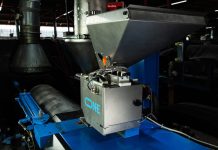The production and quality of wood pellets can have a significant difference. So, it is important to know the recommended quality of pellets while in the market. Pellet makers may only know about a few methods for testing the quality of pellets, that is, using equipment such as a wood pellet screener and moisture analyzer. There are other simple methods that you may use to check for the quality of wood pellets.
Mechanical durability
Mechanical durability is the ability of a pellet to withstand handling. If the pellets are not mechanically durable, they break when handled. Some pellets will break while others will show signs of wear. Ideally, pellets should show durability even when held. The recommended durability ought to be 97.5.
Check the content of ash
High-quality wood pellets should have a considerably low level of ash content. The acceptable amount of ash in wood pellets is 0.7%. If the ash content of the wood pellet is high, it means that the wood pellet is very dry and therefore has a shallow moisture content. Consequently, the wood pellet may not be mechanically durable.
Check the content of moisture
Moisture has a vital role in wood pellets. Meaning low moisture content will affect the overall quality of wood pellets. The recommended moisture level in wood pellet should range between 8-10%. The wood pellet might be tough if the moisture content is very high. On the other hand, very low moisture content may reduce the mechanical durability of the pellets.
Size of the pellets
The standard size of a pellet that should be used as fuel is between six and eight millimetres in diameter and a length of three to four times the diameter. A wood pellet screener would be helpful to sift off the unwanted sizes of wood pellet.
Bulk density of the wood pellets
The bulk density signifies the weight of a given volume of loose wood pellets. Too low weight of the pellets indicates inadequate compression, which may cause the wood pellets to have high fine amounts.
Binding agents present
Some raw materials do not require binding agents during their production. An example of such a plants is the conifer sawdust. Suppose you are using broad-leavened species to make the wood pellet. In that case, a binding agent would be necessary to bind the raw materials together.
You can point out the quality of wood pellets through smell or visual appearance. These are other simple ways that you may use to check the quality of the wood pellets. For example, by grabbing a handful of wood pellets in your hand and smelling them to tell the odour. If the wood pellets have a bad smell, you would feel an abnormal smell.
Similarly, when you burn a wood pellet, the smell ought you be similar to a plank of burning wood. If the teste tells otherwise, you may be in a position to understand where there might have been a problem. Afterward, it would be best to look for a solution to the discovered issue.










